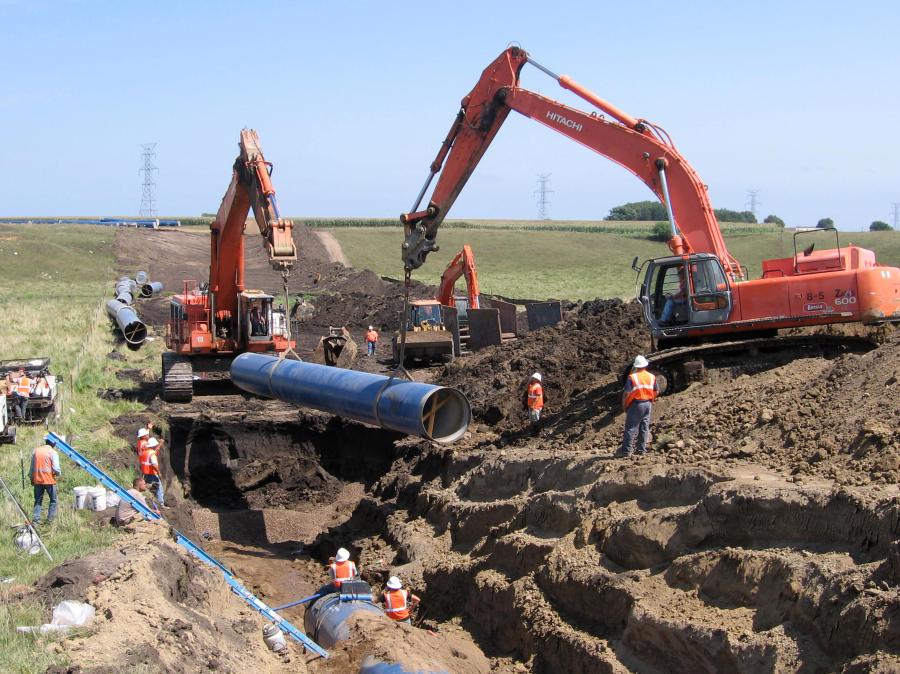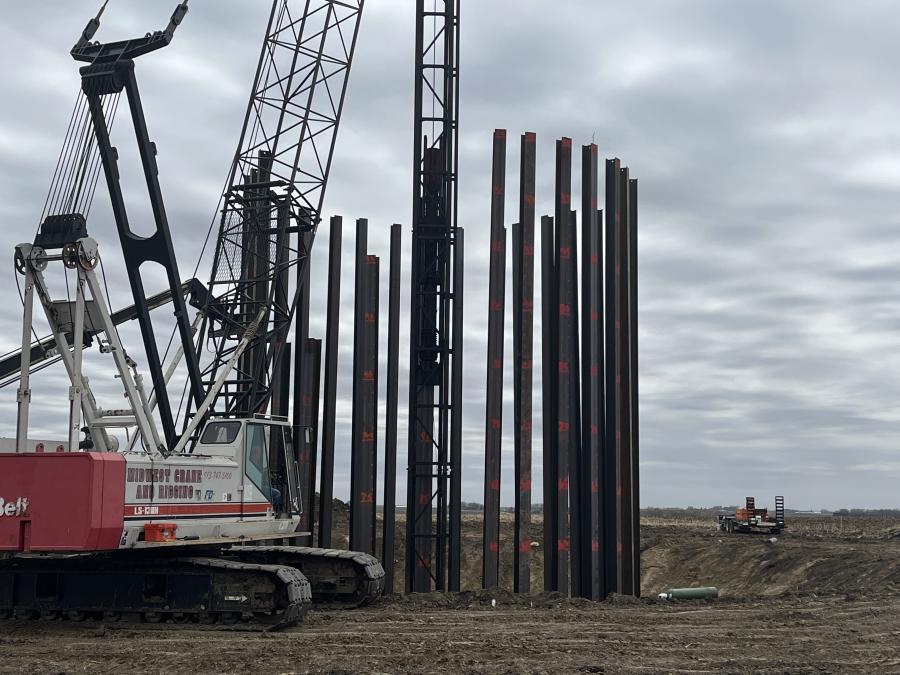Crews are working on the Lewis & Clark Regional Water System, which was designed to supply high-quality drinking water to residents in South Dakota, Iowa and Minnesota.
(Lewis & Clark Regional Water System photo)
Progress continues on an experimental construction project that debuted in the Midwest almost two decades ago. Crews are working on the Lewis & Clark Regional Water System, which was designed to supply high-quality drinking water to residents in South Dakota, Iowa and Minnesota.
"Lewis & Clark is a wholesale provider of water to its 20 member cities and rural water systems," said Troy Larson, executive director. "The idea started in 1987, back when parachute pants were still popular, which shows how long it's taken to get to where we are today. Our members created Lewis & Clark because they needed more water quantity, were struggling with water quality issues or both."
Groundbreaking for the project began in August 2003, with significant construction starting in the spring of 2004.
According to Larson, five contracts remain to be awarded in order to complete the base system of 44.19 million gal. per day (MGD).
"We are in the process of expanding the system to 60 MGD. Work started this year on the expansion, with estimated completion in 2030."
There are multiple projects under way currently. They include construction of 32 mi. of 24-in. PVC pipeline for the Madison, S.D., service line, which is divided into two separate contracts of 16 mi., each using two separate contractors (Halme Construction and Carstensen Contracting). Work also has started on a 22 MGD radial collector well near Vermillion, S.D., overseen by Welfl Construction. Other projects include a 2.5 million gal. composite water tower at Beresford, S.D., and a 1 million gal. composite water tower near Sheldon, Iowa — both led by Caldwell Tanks; construction of a meter building at Sioux Center, Iowa, overseen by D.W. Proehl; expansion of the meter building at Hull, Iowa; the addition of pumps to the Beresford pump station; improvements to the high service pump station at the water treatment plant led by PKG Contracting; and construction of 17 mi. of 16-in. diameter PVC pipeline between Hull and Sheldon, Iowa, supervised by Eatherly Constructors.
Larson said the amount of time devoted to the project, to date, is extremely gratifying.
"Because of the slow pace of federal funding, for many years we could not tell members what decade, let alone what year, they might be receiving water. As we get toward the end, and with passage of the bipartisan infrastructure bill, the remaining five members we need to connect now know when they will begin receiving water.
"We have five contracts to award in order to complete the base system of 44.19 MGD. Those projects are estimated to cost a combined $83M in today's dollars. We expect to have all 20 members connected by late 2024/early 2025. This will complete the base system of 44.19 MGD."
Larson noted that, by current standards, the price tag for the 44.19 MGD system totals $640 million. Grant funding for construction includes 80 percent from the federal government; 10 percent from the three states; and 10 percent from the 20 participating members. After close to 10 years of hearings, the project was finally authorized by Congress.
Larson admitted that monitoring the ongoing construction has not been easy.
"It's been incredibly challenging and difficult, especially not knowing until passage of the infrastructure bill how much federal funding we would receive each year. The three states and 20 members prepaid their share of the project about 15 years ago for a combined $154 million, so the pace of construction the last 15 years has been entirely dependent upon federal funding.
"Like our namesake explorers, Lewis & Clark is a vanguard project. Never has there been a cooperative partnership between the federal government, three states and 20 local governments. Our federal funding for construction flows through the Bureau of Reclamation, which only operates in the 17 most western states, with South Dakota and North Dakota being the eastern border of their service area. This is the first time there has ever been a reclamation project in Iowa and Minnesota, which makes it unique."
In addition to dealing with inflation and supply chain issues, keeping construction on schedule has been challenging, with the water treatment plant by far the biggest, longest and most complex task.
The elements also have been an issue for crews.
"We've been in a drought since 2020, but 2018 and 2019 were the first and second wettest years on record in South Dakota," said Larson. "The wet weather made pipeline construction very challenging and involved a lot of extra de-watering."
As for dirt work, it's impossible to determine the number of cubic yards of material moved during construction, because of the length and scope of the project, which requires a variety of heavy machinery.
Larson said a mix of excavators and backhoes are being used for pipeline installation.
"There is six feet of fill on top of our pipeline, so the depth of excavation depends on the diameter of the pipe."
Construction is 93 percent complete, although the project is far from finished. Still, Larson has high hopes for the effort.
"Something like this has never been tried before. The goal is regionalization."
He added, "Lewis & Clark will have an immense impact on improving the quality of life and expanding economic development opportunities in the tri-state region, which today will benefit an estimated 350,000 people, and will have a profound impact on generations to come." CEG
Today's top stories



















